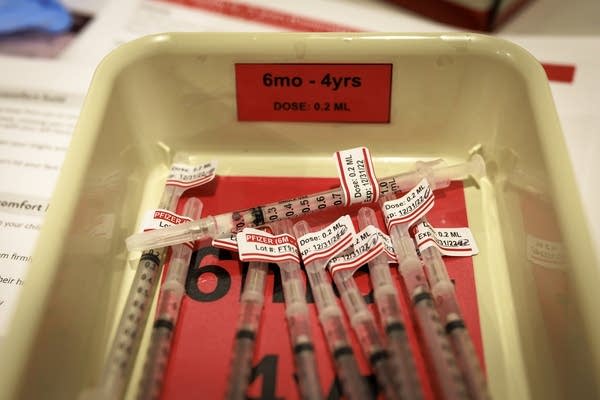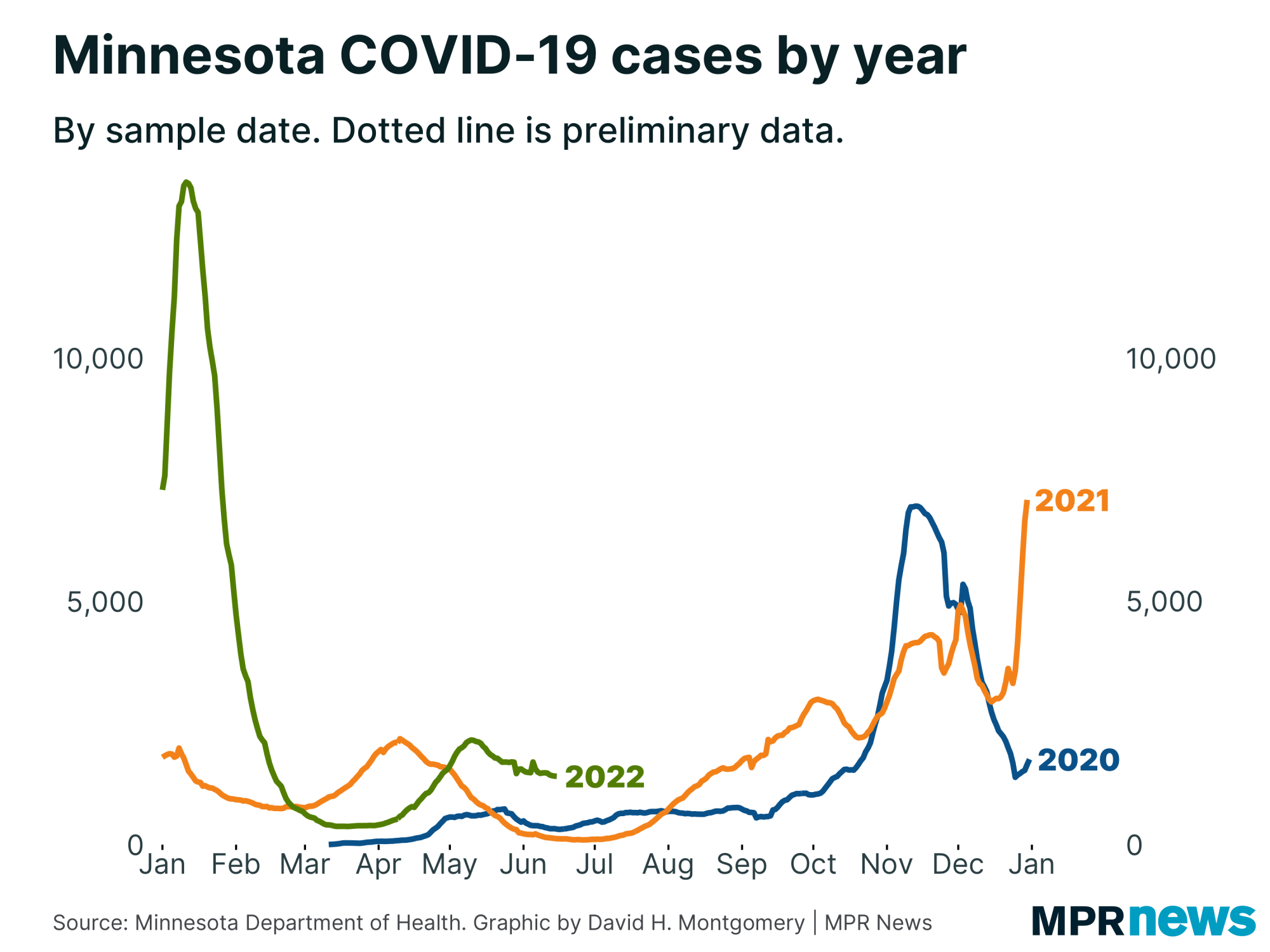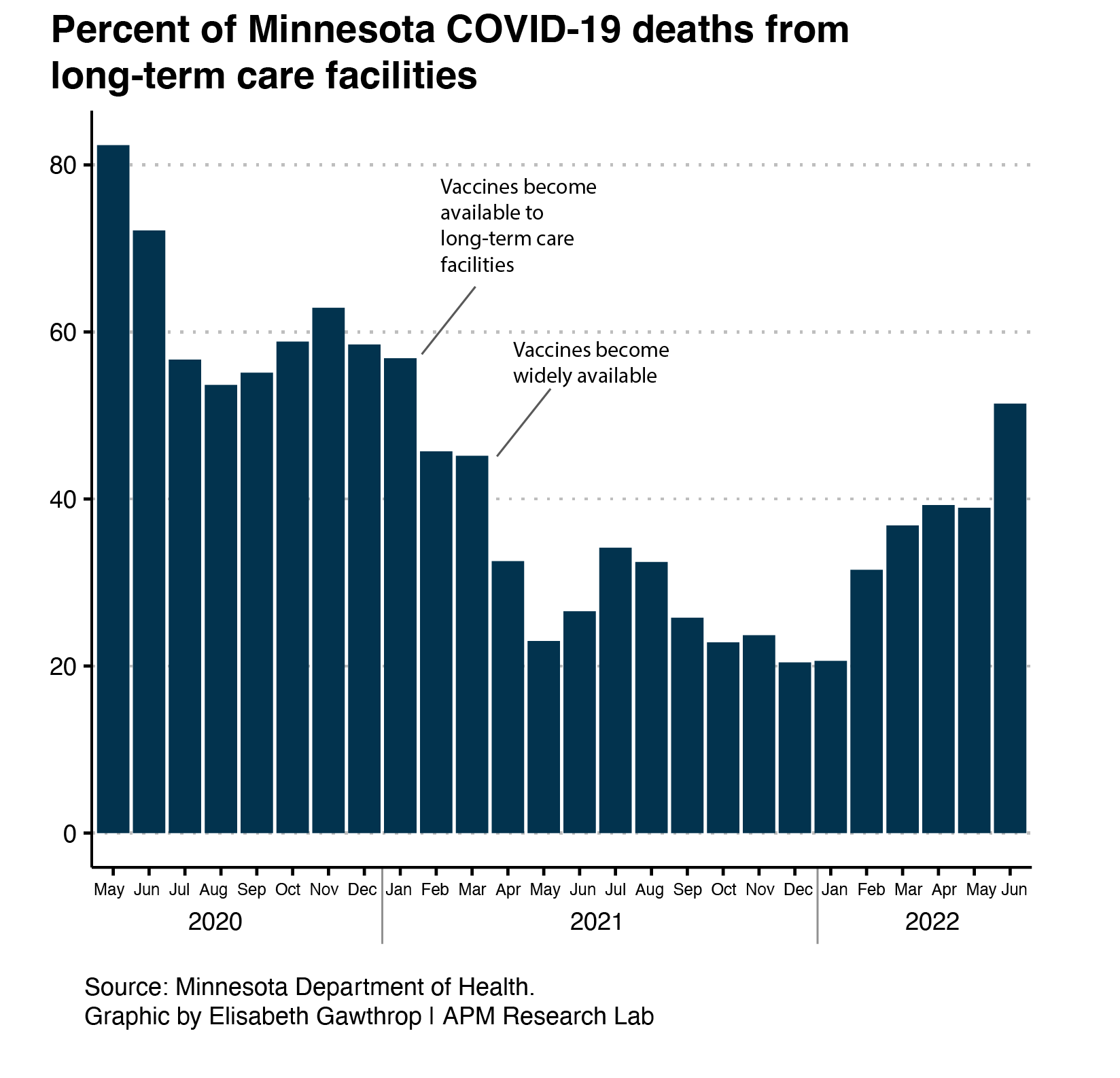COVID increases 13 percent in metro wastewater, deaths rise among older Minnesotans

Go Deeper.
Create an account or log in to save stories.
Like this?
Thanks for liking this story! We have added it to a list of your favorite stories.
Minnesotans younger than age 5 are now getting COVID-19 shots, but if you’ve been watching the vaccination data closely, that wasn’t the only the change this week in vaccination data from the Minnesota Department of Health. The department also changed the definition of “fully boosted” since older adults are now recommended to get multiple boosters.
On Twitter, our former colleague David Montgomery has more details.
Overall, COVID-19 metrics remain relatively stagnant, with cases, hospitalizations and deaths either stable or slightly declining. The Centers for Disease Control and Prevention county-level risk metric also shows a decline in COVID across much of the state.
A small uptick in wastewater COVID load in the Twin Cities could portend an increase in cases to come, but the unpredictability of this virus makes such forecasting difficult. Details on all of these indicators below, as well as a new analysis that shows the share of deaths among older Minnesotans is rising.
Turn Up Your Support
MPR News helps you turn down the noise and build shared understanding. Turn up your support for this public resource and keep trusted journalism accessible to all.
COVID plateau persists
This week we again beat the drum that overall COVID-19 metrics are relatively stable in Minnesota. Cases are slightly down, hospitalizations are fairly flat (albeit they have dropped the last two days) and deaths continue to waver around five per day.



Wastewater sending mixed messages: Up in metro, down everywhere else (for now)
Today’s message from the Metropolitan Council and University of Minnesota’s Genomic Center: “The viral RNA load in Metro Plant influent increased by 13 percent“ for the week ending June 20. This about makes up for last week’s 16 percent decline, so we can at least hope this is more of a plateau than a temporary low point followed by an upswing. Time will tell.

The Metropolitan Council also noted that 43 percent of this week’s viral load was identified as omicron subvariant BA.2.12.1 (down from last week); 36 percent was subvariant BA5 (up from last week and expected to soon be the dominant subvariant).
The University of Minnesota Medical School’s parallel wastewater monitoring project shows more hopeful trends: For the week ending June 12, COVID-19 levels were declining in all seven of the state’s regions. This good news follows last week’s good news of declines in six regions.
One caveat: the preliminary data for the project for the week ending 6/19 shows increases in south-central and especially northwestern Minnesota. That preliminary data is typically revised upward. We will let you know whether those increases are confirmed next week.
CDC: No orange counties!
The Centers for Disease Control and Prevention’s latest community-level assessments place zero counties in the high risk orange category for the first time in several weeks. Even Olmsted County, which was most consistently orange, is now green.
Seventeen counties remain in the medium risk category, however.

Underlying these assessments: COVID-19 case rates, which are currently highest in Murray, Yellow Medicine, and Koochiching counties, and COVID-19 hospital admission rates, which are currently highest in Lincoln, Lyon, and most of the state’s Iron Range and Arrowhead counties.
Share of older Minnesotans dying of COVID-19 is on the rise
In recent newsletters we’ve touched on the rise in numbers of cases among older Minnesotans, which tracks with data and reporting at the national level. But case data has become less reliable for comparisons to earlier in the pandemic with the rise of at-home testing. So this week we take a look at death data, for both seniors and long term care residents, which should be more consistently reported.

The upshot is the pattern of increasing risk for older Minnesotans also shows up in the mortality data. The share of deaths among those 70 and older went down when vaccines became widely available, and now it’s rising again. Although some analyses, including the link above, showed that the early 2022 omicron was deadlier for older adults than delta was, that doesn’t seem to have been the case for Minnesotans. But it does look like the recent omicron variants are taking a higher toll on seniors.

Looking specifically at people who died of COVID-19 living in long-term care, we see that long-term care residents made up over half of deaths until the vaccine became available. And after the vaccine became widely available, the share of long-term care deaths dropped to 20-25 percent for much of 2021. But deaths among long-term care residents look to be on their way up in 2022.
The most recent data from June (up to the 10th of the month) has long-term care deaths up to over 50 percent again for the first time since the vaccine became widely available.



